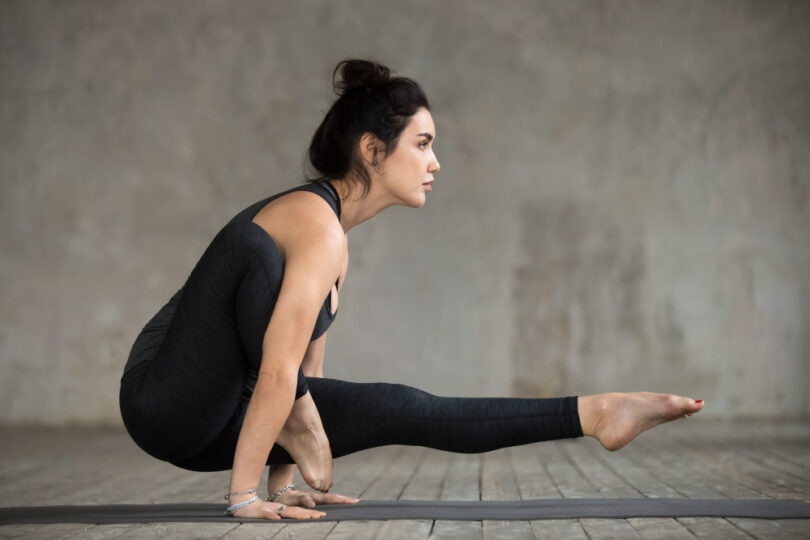Table of Contents
Introduction to Hatha Yoga
Hatha Yoga, often called “yoga,” is a centuries-old practice that originated in ancient India. It is a holistic approach to health and well-being, combining physical postures (asanas), breathing techniques (pranayama), and meditation to promote overall wellness.
History and Origins
The term “Hatha” is derived from the Sanskrit words “ha,” meaning sun, and “then,” meaning moon, symbolizing the balance of opposing forces. Hatha Yoga traces its roots back to the 15th century when the sage Yogi Swatmarama compiled the Hatha Yoga Pradipika, one of the most influential texts on Hatha Yoga.
Principles of Hatha Yoga
Hatha Yoga focuses on achieving balance between the body and mind through physical postures, breathing exercises, and meditation. It aims to improve flexibility, strength, and mental clarity while promoting relaxation and stress relief.
Benefits of Practicing Hatha Yoga
Hatha yoga, a branch that emphasizes physical postures (asanas), breathing techniques (pranayama), and meditation, offers many benefits for the body and mind. Here are some key benefits of practicing Hatha yoga:
- Physical Health: Hatha yoga helps improve flexibility, strength, balance, and posture. It can also help alleviate chronic pain and improve overall physical fitness.
- Stress Reduction: Focusing on deep, mindful breathing and meditation in Hatha yoga can help reduce stress and anxiety. It promotes relaxation and a sense of calmness.
- Mental Clarity: Regular Hatha yoga can enhance clarity, focus, and concentration. It can also improve memory and cognitive function.
- Emotional Well-being: Hatha yoga can help regulate emotions and promote a positive outlook. It can reduce symptoms of depression and improve overall emotional well-being.
- Improved Breathing: The breathing techniques (pranayama) practiced in Hatha yoga can improve lung function, increase oxygen flow to the brain, and promote better respiratory health.
- Better Sleep: Hatha yoga can help improve sleep quality by promoting relaxation and reducing stress and anxiety, leading to more restful sleep.
- Weight Management: Regular practice of Hatha yoga, combined with a balanced diet, can aid in weight management by promoting mindfulness, healthy eating habits, and physical activity.
- Spiritual Growth: For those seeking spiritual growth, Hatha yoga offers a path to self-discovery, self-awareness, and inner peace through its focus on meditation and mindfulness.
- Overall Well-being: By promoting physical, mental, and emotional well-being, Hatha yoga can enhance overall quality of life and provide a holistic approach to health and wellness.
Common Poses and Asanas
Some of the standard poses and asanas practiced in Hatha Yoga include the Mountain Pose (Tadasana), Downward-Facing Dog (Adho Mukha Svanasana), Warrior Pose (Virabhadrasana), and Child’s Pose (Balasana). These poses help stretch and strengthen the muscles, improve flexibility, and enhance body awareness.
Related Article: Exploring the Essence and Practice of Hatha Yoga
Breathing Techniques in Hatha Yoga
Breathing techniques, or pranayama, are an essential component of Hatha Yoga. Deep, mindful breathing can help calm the mind, reduce stress, and increase energy levels. Some standard pranayama techniques include Alternate Nostril Breathing (Nadi Shodhana) and Breath of Fire (Kapalabhati).

How to Get Started with Hatha Yoga
To get started with Hatha yoga, follow these steps:
- Set Your Intentions: Decide why you want to practice Hatha yoga. Whether for physical fitness, stress relief, or spiritual growth, clarifying your intentions can help you stay motivated.
- Find a Suitable Class: Look for a Hatha yoga class. Many yoga studios offer beginner-friendly classes focusing on Hatha yoga’s fundamental principles and postures.
- Gather Your Gear: You’ll need comfortable, stretchy clothing for easy movement. A yoga mat is essential for practicing on a stable, comfortable surface.
- Start with Basic Poses: Begin with foundational poses like Mountain Pose (Tadasana), Warrior Pose (Virabhadrasana), and Child’s Pose (Balasana). These poses will help you build strength, flexibility, and balance.
- Focus on Breathing: Hatha yoga strongly emphasizes breathing techniques (pranayama). Practice deep, mindful breathing to enhance your practice and promote relaxation.
- Listen to Your Body: How your body feels during practice. Modify a pose or come out gently if it feels uncomfortable or painful. Honor your body’s limitations and avoid pushing yourself too hard.
- Stay Consistent: Like any form of exercise, consistency is vital to experiencing the benefits of Hatha yoga. Aim to practice regularly, even if it’s just for a few minutes each day.
- Seek Guidance: If you’re new to yoga, consider taking a few classes with a qualified instructor to learn proper alignment and technique. This can help prevent injuries and ensure you get the most out of your practice.
- Enjoy the Journey: Hatha yoga is not just about physical postures; it’s a journey of self-discovery and self-improvement. Approach your practice with an open mind and a sense of curiosity, and enjoy learning and growing with each practice.
Hatha Yoga for Seniors
Hatha Yoga can be particularly beneficial for seniors as it helps improve flexibility, balance, and strength, which are critical factors in preventing falls and maintaining independence. Gentle, modified poses can be practiced to accommodate any physical limitations.
Hatha Yoga vs. Other Yoga Styles
Hatha yoga is often considered the foundation of all modern yoga styles. It focuses on physical postures (asanas), breathing techniques (pranayama), and meditation. Here’s how Hatha yoga compares to some other popular yoga styles:
- Hatha Yoga vs. Vinyasa Yoga: Vinyasa yoga is a more dynamic and flowing style synchronizing movement with breath. It tends to be more physically demanding than Hatha yoga, which is generally slower-paced with longer holds in poses.
- Hatha Yoga vs. Ashtanga Yoga: Ashtanga yoga is a structured and vigorous style following a specific pose sequence. It is more physically challenging than Hatha yoga and focuses on building strength, flexibility, and stamina.
- Hatha Yoga vs. Iyengar Yoga: Iyengar yoga emphasizes precision and alignment in poses, often using props such as blocks, straps, and bolsters to help students achieve correct alignment. While also focusing on alignment,hatha yoga may be less strict in its approach.
- Hatha Yoga vs. Bikram Yoga: Bikram yoga, also known as hot yoga, is practiced in a heated room and follows a sequence of 26 poses and two breathing exercises. Hatha yoga, on the other hand, is not limited to a specific sequence and is not necessarily practiced in a heated room.
- Hatha Yoga vs. Kundalini Yoga: Kundalini yoga incorporates dynamic movements, breathing techniques, chanting, and meditation to awaken the energy at the base of the spine (kundalini). While incorporating breathing and meditation, Hatha yoga may not focus as specifically on awakening this energy.
- Hatha Yoga vs. Yin Yoga: Yin yoga is a slow-paced style that focuses on passive, seated poses held for more extended periods (usually 3-5 minutes or more). Hatha yoga may include longer holds in poses, but it is generally more varied in its approach and may include more active poses as well.
Overall, Hatha yoga is a versatile and accessible yoga style suitable for beginners and experienced practitioners alike. It provides a solid foundation for exploring other yoga styles and offers a balanced practice that integrates physical, mental, and spiritual elements.
Related Article: Silver Sneakers Yoga for Seniors
Conclusion
Hatha Yoga is a powerful practice that offers numerous benefits for the body and mind. By incorporating physical postures, breathing techniques, and meditation into your daily routine, you can experience improved health, vitality, and well-being.







